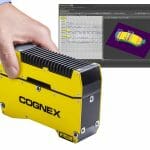In J. K. Rowling’s fictional series, Harry receives a mysterious cloak of invisibility. Older machines could soon become equally invisible if they are not retrofitted with connective technology. Here Neil Ballinger, head of EMEA at automation parts supplier EU Automation, explains what manufacturers can do to keep their machines visible and connected to the Internet of Things (IoT).
Cisco, the telecommunications equipment provider, forecasts that by 2023, 29.3 billion devices will be connected to the internet. Half of these devices will fall into the category of the IoT, making this the fastest growing connection technology. Industrial automation suppliers have embraced the IoT with companies like ABB, Honeywell, Rockwell and Siemens all offering interconnected products. They build motors with sensors that monitor speed and vibration, or robots that have sensors to see and touch their work.
The amount of information that plant managers gather from manufacturing processes is growing exponentially. A lot of the data they require to make decisions about manufacturing processes is now processed on edge devices. The key is that data is crunched as close as possible to where it is needed. Many devices now have the data processing and storage capability to process information locally, before sending it to a server in aggregated form for further analysis.
Shrouded in legacy technology?
Does this mean that machines that are older than a few years and have no IoT connectivity are no longer up to standards? Worse, could legacy equipment become invisible in a world of data-driven decisions? Fortunately, there are technologies available to upgrade the connectivity of industrial machines and get them ready for the world of IoT.
How can older machines be upgraded with connectivity? First, they need to be fitted with sensors. For instance, ABB, the Swiss-Swedish electrical equipment supplier, supplies sensors that can be fitted to pumps or motors. These sensors come as an easy-to-install kit, including a receiving mount, a mounting bracket, a tube of putty and the necessary screws.
By adding a retrofitted sensor, the pump or the motor that has been doing its job loyally for years is turned into a powerhouse of data generation. The sensors measure parameters such as overall condition, vibration, bearing condition, balance and temperature. With this data, plant managers can make judgements on the equipment’s efficiency, spot potential problems, such as misalignment and perform early preventative maintenance.
With the Orange Box from B&R Industrial Automation plant managers can upgrade almost any type of legacy equipment with IoT capabilities. The orange box reads the data output of the machine, through I/O channels or a fieldbus. First, the software on the orange box converts the data output from the machine into KPIs and an OEE rate. As a second step, the software on the orange box has the capability to convert the data it collected to a form that an ERP software is able to read, via an OPC UA connection.
The orange box does not require any software or hardware changes on the manufacturing machine itself but opens up the entire world of IoT to machines that did not previously have this capability. As the numbers of machines connected to the internet rise exponentially, it is important that no factory and no machine has a cloak of invisibility.





